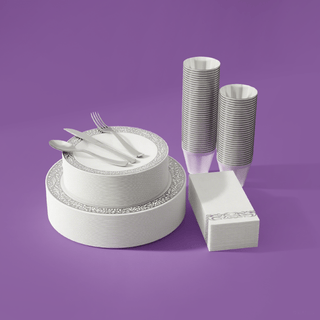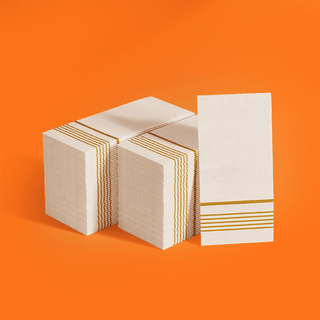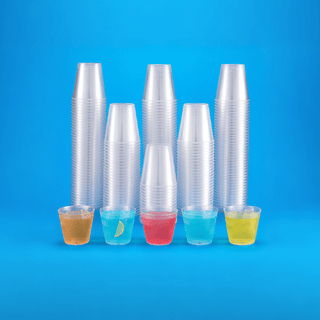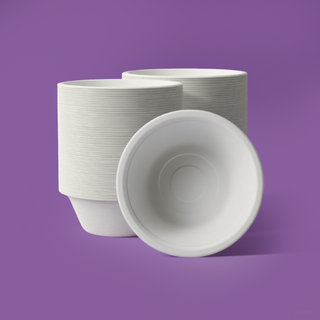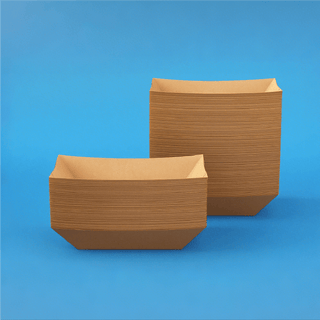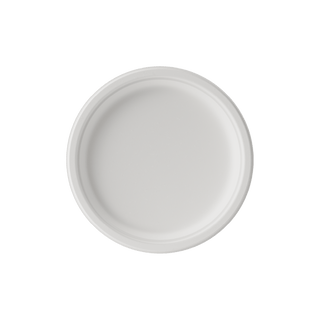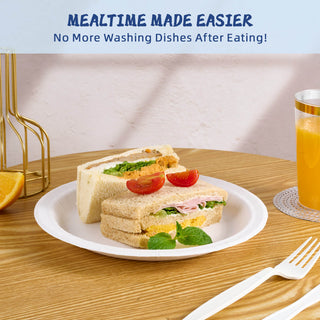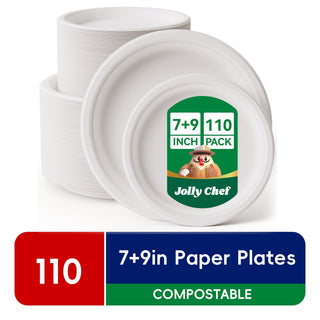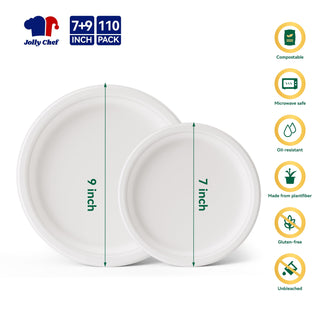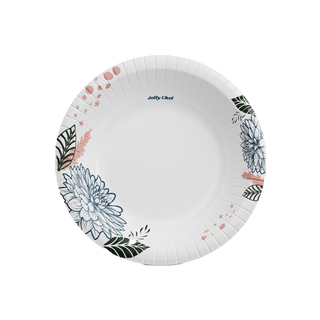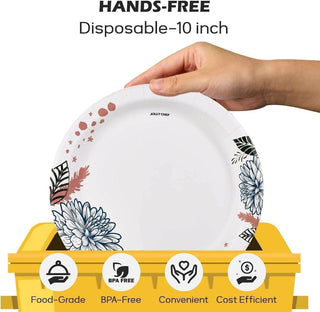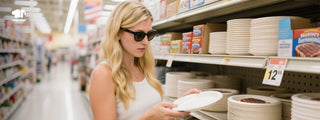
Introduction
In our fast-paced modern lives, convenience often reigns supreme, and paper plates have become a symbol of this practicality, serving diverse needs from simplifying cleanup to inspiring creativity. However, the vast array of options can be daunting. This guide aims to navigate the world of paper plates, empowering you to make informed decisions based on value, explore sustainable alternatives, and discover their unexpected artistic potential. Join us as we delve into the practicality, eco-friendly potential, and surprisingly versatile uses of the humble paper plate.
I. Real Talk on Paper Plates: Value, Quality, and User Opinions
Choosing the right paper plate might sound simple—but anyone who's ever hosted a BBQ or dealt with a soggy plate of mac and cheese knows it’s anything but. Here’s what to actually look for when shopping for paper plates that won’t disappoint.
Look Good, Feel Right: Design & Size

Paper plates aren’t just for holding food—they help set the tone. For a backyard cookout, opt for simple, rustic designs that match the relaxed, outdoor vibe. For a kids’ party, go bold with fun prints or cartoon characters that add to the playful atmosphere. The right design adds a touch of style and can elevate even the most casual gathering.
Size also plays a big role. For dinner, go with 10- to 12-inch plates to comfortably fit a full meal. Lunch is best served on slightly smaller 7- to 9-inch plates—perfect for sandwiches, burgers, or wraps. Dessert, appetizers, or snacks fit nicely on 6- to 7-inch plates. And for mini treats or finger foods, 3- to 5-inch plates are both practical and charming.
What’s It Made Of?: Paper, Coatings & More

Today’s paper plates come in more flavors than just paper. Options include virgin pulp, recycled paper, and eco-conscious materials like sugarcane fiber (bagasse). Keep an eye out for coatings—some are great for grease resistance but might not be microwave-safe or compostable. Look for clear labeling to know what you’re getting.
Not all plates are created equal when it comes to food safety. Choose plates labeled BPA-free and food-grade. If you're planning to reheat food on them, look for the microwave-safe symbol—some decorative plates can warp or even spark. Eco-conscious? Look for compostable certifications from groups like the Biodegradable Products Institute (BPI).
Real User Insights: What to Watch For

Heavy Food Needs Heavy-Duty Plates
If your menu includes BBQ, pasta, or saucy dishes, regular plates just won’t cut it. Lightweight paper plates can buckle under pressure. Choose products labeled “heavy-duty,” “cut-resistant,” or “soak-proof.” These plates often have reinforced coatings that prevent leaks and hold up under the weight of a full meal.
Heat Can Be a Hidden Enemy
Hot food can spell disaster for low-quality plates. What looks fine at first can quickly become flimsy and collapse when hot dishes are served. For steaming meals, pick heat-resistant plates, especially those made from bagasse or marked as microwave-safe.
Outdoors? Don't Forget the Wind
Planning an outdoor event? Wind is the enemy of flimsy paper plates. Lightweight ones can easily fly away, causing spills and frustration. Plates with textured bottoms or thicker rims provide better grip and stability, helping to avoid those windy mishaps.
Safety First—Especially for Kids and Seniors
Some users report sharp or rough edges on ultra-thin paper plates, which can scrape mouths or hands. If safety is a concern—especially around children or older guests—opt for brands known for smooth edges and quality construction.
Feeding a Crowd? Shop Smart
Hosting a big event? Volume and storage become critical. Look for plates that are both lightweight and durable, and easy to stack and store. If you’re trying a new brand, start with a small pack to test quality before committing to a bulk purchase.
The right paper plate does more than just hold food—it helps ensure your event runs smoothly and comfortably. It lets guests enjoy their meal with peace of mind, while making the host's job a whole lot easier. Next time you're shopping for paper plates, check out our comparison review of the best paper plate brands. Think ahead—it’ll make your gathering more relaxed and polished.
II. Go Green with Your Eco-Friendly Paper Plates
As environmental concerns continue to rise, traditional paper plates are increasingly being scrutinized for their hidden environmental impacts. Many disposable plates, while seemingly harmless, are lined with plastic coatings that hinder biodegradation and contribute to landfill buildup. Fortunately, a new wave of sustainable consciousness has fueled the development of eco-friendly alternatives that reduce waste and promote a healthier planet.

Types of Eco-Friendly Materials
Environmentally friendly materials generally fall into two main categories: compostable and biodegradable.
- Compostable materials:can break down into nutrient-rich soil in composting environments without leaving toxic residues.
- Biodegradable materials:can decompose naturally, but the process may vary in time and conditions, and not all biodegradable products are suitable for composting.
Here are some popular eco-friendly materials being used today:
- Bagasse (sugarcane fiber): Both compostable and biodegradable.
- Bamboo: Naturally biodegradable and compostable, though it might take a bit longer than other fibers.
- Palm Leaf: Biodegradable and compostable, made from naturally fallen palm leaves.
- Recycled Paper/Cardboard: Biodegradable and recyclable.
- Paperboard with Water-Based Coatings: Designed to be more easily recyclable and compostable.
- PLA and CPLA: Bioplastics made from renewable resources, compostable in industrial composting facilities.
Commonly, you'll often find eco-friendly paper plates made from materials like recycled paper, cardboard, bagasse, and palm leaf. These smart choices help reduce the demand for virgin resources and break down more safely after use. For higher durability, some eco-friendly plates are made with bamboo, offering extra strength while staying sustainable. You might also come across plates with PLA or CPLA coatings, which improve resistance to moisture and grease while keeping the plates compostable under the right conditions.
Coatings on Sustainable Plates
Even with eco-friendly materials, many plates still need a little something extra to prevent leaks and stay strong. But the good news is, instead of traditional plastic coatings, sustainable options often use smarter alternatives:
- Water-based coatings: These are non-toxic and make the plates easier to recycle, which is a big plus.
- PLA or bio-based coatings: These coatings allow the plate to remain compostable under the right industrial composting conditions.
And sometimes, for plates designed for dry snacks or foods without a lot of liquid, you might even find options with no coating at all, giving you a completely natural choice.
Decoding the Eco-Labels
To make sure the "eco-friendly" claims on a product are the real deal, it's important to look for credible certifications from recognized organizations. These labels act like a stamp of approval:

- DIN EN 13432: Defines compostability under industrial composting conditions.
- FSC (Forest Stewardship Council): Ensures responsible sourcing of wood and paper products.
- Seedling Logo: Indicates compostability certified by TÜV Austria.
- BPI Compostable Certification: Confirms compostability based on ASTM standards in North America.
- The Nordic Swan Ecolabel: Assesses overall environmental impact across a product’s life cycle.
- EU Ecolabel and USDA Certified Biobased Product Label: Recognize products with reduced environmental footprints.
Now, having explored the eco-conscious choices available, let's switch gears and discover the surprisingly creative potential that lies within these humble paper plates beyond just mealtime.
III. From Art to Life: Unleashing the Creativity of Paper Plate Crafts
When Plates Became Canvases: Picasso’s Artistic Exploration

Who would’ve thought a simple plate could inspire a master like Pablo Picasso? In his later years, Picasso embraced ceramics, often painting bold, abstract designs on round plates. His works blurred the lines between sculpture and painting, showing that even everyday objects could carry artistic weight. By reimagining plates as canvases, Picasso expanded our definition of art and inspired future generations to see creativity in the most unassuming materials.
The Artistic Potential of Paper Plates
Picasso wasn’t alone in exploring the artistic possibilities of everyday objects. Over the years, numerous contemporary artists have embraced paper plates as a low-cost, accessible canvas for creative expression. From minimalist ink sketches to vibrant mixed-media collages, artists have used the circular shape of the plate as a foundation for their work. This trend underscores the idea that art doesn't always require expensive materials—just imagination and an eye for beauty in the everyday.
For example, Roy Lichtenstein, known for his bold pop art style, created screen-printed paper plates that reflected his signature comic-book aesthetic. Tara Donovan, on the other hand, used thousands of paper plates to create large-scale abstract sculptures that captured the beauty of repetition and form. Christian Zucconi painted intricate, detailed designs directly on paper plates, transforming a disposable object into a refined piece of art. Lisa Kokin uses paper plates in her mixed-media sculptures, often incorporating sewing, cutting, and layering techniques to explore themes of consumerism and memory. Lastly, Morgan O'Hara has used paper plates as a surface for her "Live Transmissions" drawings, which capture movement and energy within the confines of a circular frame. These artists demonstrate the versatility of paper plates as a medium for both traditional and experimental art.
Crafting Joy in Daily Life: Family Fun with Paper Plates

Beyond the world of professional artists, paper plates have found a home in family craft rooms and classrooms, where they serve as a fun, affordable medium for hands-on creativity. Popular with parents, educators, and children, paper plate crafts are a fantastic way to encourage creative exploration while developing fine motor skills. Whether it’s creating animal masks, sun-shaped mobiles, or festive decorations for holidays, these crafts help children connect with their imagination and gain a sense of accomplishment.
What makes paper plate crafts so special is that they turn everyday moments into opportunities for connection and fun. These simple projects can foster a sense of joy and creativity that resonates far beyond the finished product. Plus, they provide a wonderful way to create lasting memories with loved ones while making use of a humble, inexpensive material.
IV. Conclusion
Paper plates truly are versatile, aren't they? You've hit on some key points about their practicality, cost-effectiveness, and even their potential for a greener footprint and artistic expression.
Speaking of thoughtful choices that blend practicality and sustainability, have you considered JOLLY CHEF Compostable White & Natural Plates? They really embody that balance. You get the convenience you expect from a paper plate, but with the added benefit of being compostable. This means that after your get-together or everyday meal, these plates can break down naturally, reducing waste and lessening their environmental impact.
Plus, the simple white and natural designs offer a clean and versatile backdrop, whether you're serving up a casual snack or getting creative with some painting or collage work. It's great to know that something so useful can also align with our values of being both practical and kind to the planet.

Post
Share
Pin it

